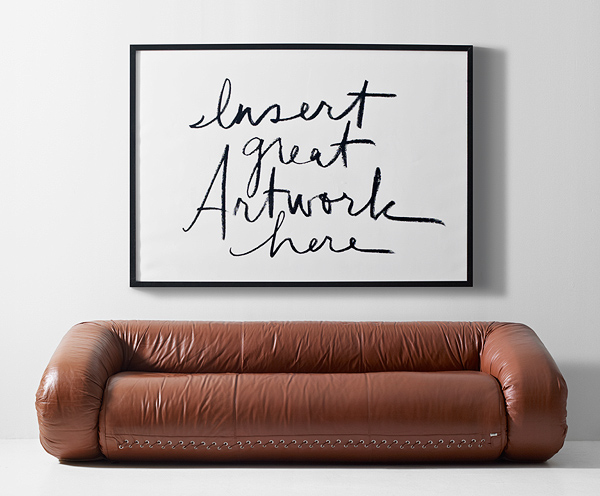
Howard Rachofsky, with wife Cindy
How it started: I was introduced to an art dealer, Ralph Kahn, who ran the Contemporary Gallery. He was primarily a dealer in prints of modern masters, and that’s where I started collecting. He became a true mentor to me, this going back to the early ’70s. I didn’t really have any inclination; I never took art history, but I was reasonably visual. I credit him with really beginning to urge me to learn a little more and to go to New York and to go look to galleries. Early on, it was about dealing with the names that you sort of knew, because everyone knew Matisse and Picasso and Calder. But you could buy a print, and it was not too dear. You could learn that this is a good one, and this is a better one. It was very much a hobby and certainly not an immersion. It starts out as a curiosity and winds up being an obsession.
When I became a “collector”: I don’t know if there was an “aha” moment, per se, but I do know there was an “aha” moment when our house was realized. As a collector, I became more interested in being a real collector, that this was going to be a passion, that this is something that is part of a bigger conversation with myself, what I wanted to get out of the art and architecture experience. Much of that was driven by this house, and much of that dates all the way back to 1983 when I first met Richard Meier [the architect of the Rachofsky House].
My collection: This building was a late 20th-century, 21st-century vision of classical modernism; it came out of the Bauhaus movement. The first logical commitment would be to artists who espouse that aesthetic sensibility. So you’re talking about Agnes Martin, Donald Judd, Robert Ryman, Carl Andre, Richard Serra, Frank Stella—a certain type of artist. There was a connection to this reduced aesthetic. For the last 15 years since the house, I’ve worked with a curator in New York, Allan Schwartzman. And it became more expansive than just that minimalist vocabulary. Interestingly, the collection has never had a pop art focus. I’ve never really caught the bug.
My advice: You have to look at art. You have to go to galleries and museums. See what strikes you and read about those things. Use the curators at your local museums because they are always anxious to teach and cultivate new collectors. Curators are a relatively inexpensive way of getting art advice without the formality of an art adviser. Just don’t be completely preoccupied with buying—be preoccupied with looking.
Favorite local spot: My daughter works at Forty Five Ten, and I love to see what Brian Bolke buys for that store across a range of categories—home and jewelry, or what I call “art jewelry.” Plus, you get a good sandwich there.

Alden Pinnell, with wife Janelle
How it started: My first purchases were actually black light posters—like velvet posters, which I bought as a kid. I went to Spencer’s and bought panthers and leopards and things like that. Then I remember in high school collecting psychedelic Fillmore posters, a lot of Grateful Dead posters. Luckily my mother would give me a framed photograph of her work for every birthday, so I had some nice things. In my mid-20s, I bought the first painting for real money. I remember going to the Chicago art fair and buying some German artist that was no doubt a mistake, but I remember it was on plaster and of a wolf, and I thought it was so serious and painterly.
Getting serious: I’d say seven, eight years ago I got serious about thinking about the type of collection I was building.
My collection: I’m most interested in collecting artists who are responding to our contemporary world. In the beginning, I purchased work by artists of my parents’ generation—wonderful artists like Donald Judd, Lucas Samaras, Anselm Kiefer, and Ed Ruscha. These guys had a different life experience and lived in a different time. It’s much more fascinating for me to collect work that is a reaction to or a response to a world in which I am currently living.
My advice: Start out slowly—that way you won’t end up with any German wolves. Borrow as many books as you can, see as many shows as you can, and talk to as many collectors as you can. Collectors are very generous with advice to new collectors. I would become a member of as many local institutions as you can and take advantage of their programs. Finally, it doesn’t hurt to take an art history class.
Favorite local shop: Collage

Derek Wilson, with wife Christen and children
Our first purchase: The first real art purchase was a painting in 1997, Richard Phillips’ Eye from the Turner and Runyon Gallery.
When we became “collectors”: On a small scale—1997. But Christen and I really started focusing on it in 2004. Now we can’t stop.
Our collection: It’s a meaningful collection spanning from 1960s minimalists to the artists of today. We encompass all media, including painting, sculpture, new media, photography, and works on paper.
Our advice: Visit your local museums to get a sense of the type of art you are visually drawn to. Join that museum and get to know the curator. They are there to help you. Go on Art Museum Day or a weekend trip. Visit collectors’ homes and see how people live with art. Go to an art fair that represents the art you like. Find an adviser to help you.
Favorite local spots: I think many of the local art galleries are good. Another great source for art is the annual Two by Two for AIDS and Art event.
produced and styled by Jamie Laubhan-Oliver






